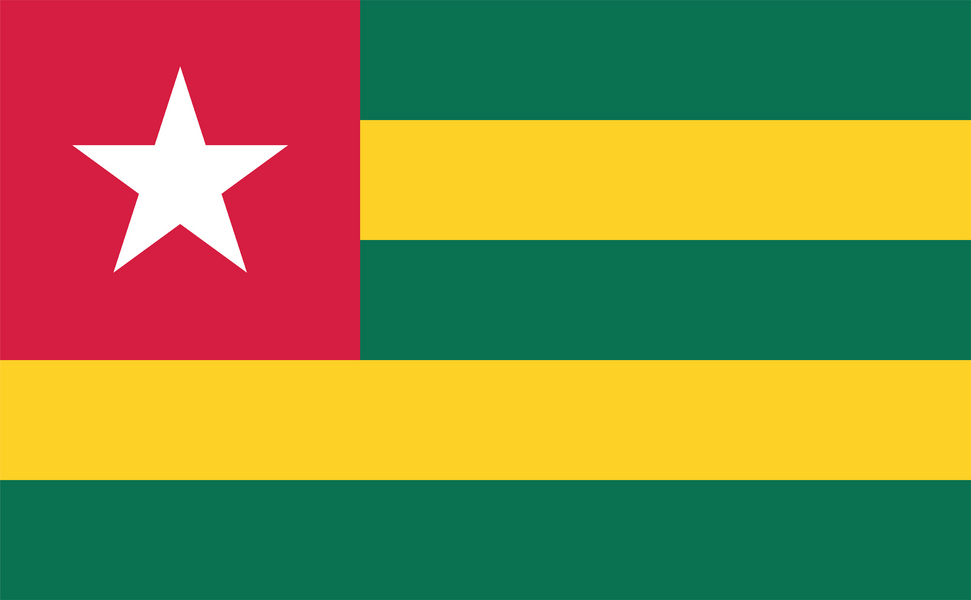Interesting Togo Facts
Togo is a coastal country located in Western Africa where it is bordered by Benin, Burkina Faso, Ghana and the Gulf of Guinea. It spreads across 56,785 km2 of land. It is estimated that the population of Togo is somewhere in the region of 7,797,694.
Check out interesting Togo facts and information about this African country with our fact file for kids. Identify important facts about the climate, currency, flag, continent, geography, landscape, language, people, culture, landmarks, population, location and size of Togo.
Discover Africa with our interesting Togo facts for kids based on questions such as: What continent is Togo in? What are the major cities of Togo? How big is Togo? What famous landmarks are there in Togo? What is the capital city of Togo?
Togo Fact File: Continent: Africa * Country Name(s): Togo, Togolese Republic * Location: Western Africa * Bordering: Benin, Burkina Faso, Ghana and the Gulf of Guinea * Capital City: Lome * Size: 56,785 km2 * Estimated Population: over 7,797,694 * Currency: West African CFA franc (XOF) * Language(s): French * Country Code: +228
Interesting Togo Facts for Kids
Interesting Facts for Kids 1: Size & location facts
Togo is located on the continent of Africa, where it has a coastal position and is bordered by Benin, Burkina Faso, Ghana and the Gulf of Guinea. There are seven continents in the world: Asia, Africa, North America, South America, Europe, Antarctica, Australia (Oceania). Africa is the world's second largest continent, occupying a total area of 30,370,000 km2. Africa has 54 countries, and forms 20.4% of the world's landmass. Togo is a coastal country that encompasses a total area of approximately 56,785 km2. It is one of Africa's smaller countries located on the continent's mainland.
Interesting Facts for Kids 2: Population facts
The population of this African country is more than 7,797,694 people. The majority of Togo's inhabitants reside in Lome which is the country's most populous city. Togo has an average population when compared to most other countries across the world, its overall population density is approximately 106 people per sq km. The estimated population of Africa is approximately 1,186,178,000 inhabitants, making it the continent with the second largest population in the world. The continents in order of population, starting with highest population first, are: Asia, Africa, North America, South America, Europe, Australia (Oceania Region) and Antarctica. The total population of the entire world is in excess of 7.6 billion people.
Interesting Facts for Kids 3: Capital & major cities
The capital city of Togo is Lome. Other major cities located in this country include Sokodé, Kara, Atakpamé, Palimé and Bassar.
Interesting Facts for Kids 4: Country borders
The following border information provides details on the length of Togo's borders:
Coastline 56 km, Benin 651 km, Burkina Faso 131 km, Ghana 1,098 km.
Interesting Facts for Kids 5: Climate and geography facts
The climate ranges across Togo from tropical to savanna, this is due to the length of the country. Southern areas of Togo experience a hot, humid climate, where as northern regions experience semiarid conditions. The geography of Togo is diverse as it's a long country that covers several major geographical regions including savanna grasslands in the north, central hilly regions, plateau in the south, and coastal regions that harbor marshes and lagoons. The lowest point of Togo is the Atlantic Ocean at 0m, and the highest point of elevation is Mont Agou at 986m.
Interesting Facts for Kids 6: Natural Resources of Togo
Natural resources can be defined as materials and substances that occur naturally on Earth. Natural resources are very important across the world, and can be exploited for economic gain. The level of resources that occur naturally in an individual country are influenced by varying factors such as the geography, climate and location of that country. Some countries are very rich in natural resources, where as others have limited to none. Countries that have particularly rich resources include Russia, The United States, Saudi Arabia and Canada. Food, construction and transport are three primary examples of uses of natural resources. The following information provides examples of these uses: fish occurs naturally in streams, rivers, lakes and oceans, and can be caught for food consumption. Wood/timber can be extracted from forests for construction purposes, i.e. to build homes and furniture. Crude oils can be refined into different kinds of fuels in order to power vehicles/cars. The natural resources found in Togo include phosphates, limestone, marble, and arable land suitable for growing crops.
Interesting Facts for Kids 7: Language facts
The official language of Togo is French. Ewe and Mina are two main languages spoken in south Togo, Kabye and Dagomba are two main languages spoken in north Togo.
Interesting Facts for Kids 8: Religion facts
The primary religion of Togo is Christian at approximately 29% of the population. Around 20% are Muslim and it is estimated that half of the population have indigenous beliefs,
Interesting Facts for Kids 9: Symbols of Togo
Every country has its own unique culture, history and identity. Flags, symbols, emblems, mottos, songs, anthems and colors are used by countries worldwide to represent national pride and identity. These national symbols are forged through a nation's unique history and can represent both hardship and prosperity, embodying freedom, strength and unity. Flags, emblems, songs, mottos and colors reflect the past, present and future hopes of a country, and create an important image to the rest of the world. National symbols can include a mixture of things that are symbolic to a country such as animals, birds, flowers, trees, geographical features, tools of agriculture, crops, and tools of war. Here are some important facts on the symbols, songs and colors of Togo:
National symbol(s): lion
National colors: green, yellow, red and white
National Anthem/Song: Salut a toi, pays de nos aieux (Translation: Hail to Thee, Land of Our Forefathers)
National Holiday(s): Independence Day, 27 April (1960)
National Motto(s): Travail, Liberté, Patrie (Translation: Work, liberty, homeland)
